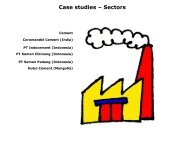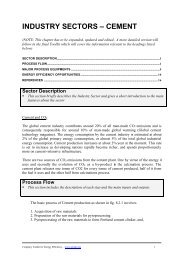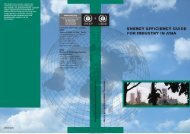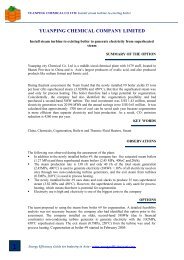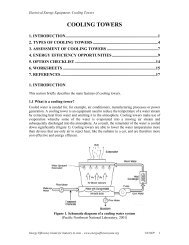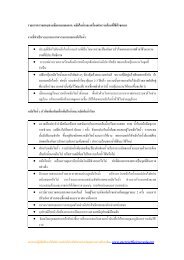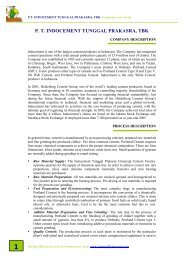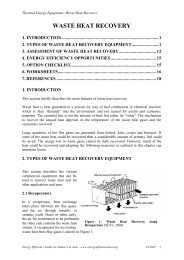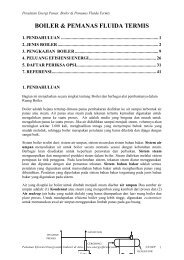Chapter - Fuels and Combustion - RETScreen International
Chapter - Fuels and Combustion - RETScreen International
Chapter - Fuels and Combustion - RETScreen International
Create successful ePaper yourself
Turn your PDF publications into a flip-book with our unique Google optimized e-Paper software.
Thermal Equipment: <strong>Fuels</strong> <strong>and</strong> <strong>Combustion</strong><br />
The chemical properties of coal refer to the various elemental chemical constituents such as<br />
carbon, hydrogen, oxygen, <strong>and</strong> sulphur.<br />
The heating value of coal varies from coal field to coal field. The typical GCVs for various<br />
coals are given in the Table below.<br />
Table 5. GCV for various coal types<br />
Parameter Lignite<br />
(Dry Basis)<br />
Indian Coal Indonesian<br />
Coal<br />
South African<br />
Coal<br />
GCV (kCal/kg)<br />
4,500 * 4,000 5,500 6,000<br />
*GCV of lignite on ‘as received basis’is 2500 –3000<br />
2.2.3 Analysis of coal<br />
There are two methods to analyze coal: ultimate analysis <strong>and</strong> proximate analysis. The<br />
ultimate analysis determines all coal component elements, solid or gaseous <strong>and</strong> the proximate<br />
analysis determines only the fixed carbon, volatile matter, moisture <strong>and</strong> ash percentages. The<br />
ultimate analysis is determined in a properly equipped laboratory by a skilled chemist, while<br />
proximate analysis can be determined with a simple apparatus. (It may be noted that<br />
proximate has no connection with the word “approximate”).<br />
Measurement of moisture<br />
The determination of moisture content is carried out by placing a sample of powdered raw<br />
coal of size 200-micron size in an uncovered crucible, which is placed in the oven kept at 108<br />
+2 o C along with the lid. Then the sample is cooled to room temperature <strong>and</strong> weighed again.<br />
The loss in weight represents moisture.<br />
Measurement of volatile matter<br />
A fresh sample of crushed coal is weighed, placed in a covered crucible, <strong>and</strong> heated in a<br />
furnace at 900 + 15 o C. The sample is cooled <strong>and</strong> weighed. Loss of weight represents<br />
moisture <strong>and</strong> volatile matter. The remainder is coke (fixed carbon <strong>and</strong> ash). For detailed<br />
methodologies (including for determination of carbon <strong>and</strong> ash content), refer to IS 1350 part<br />
I: 1984, part III, IV.<br />
Measurement of carbon <strong>and</strong> ash<br />
The cover from the crucible used in the last test is removed <strong>and</strong> the crucible is heated over the<br />
Bunsen burner until all the carbon is burned. The residue is weighed, which is the<br />
incombustible ash. The difference in weight from the previous weighing is the fixed carbon.<br />
In actual practice Fixed Carbon or FC derived by subtracting from 100 the value of moisture,<br />
volatile matter <strong>and</strong> ash.<br />
Proximate analysis<br />
The proximate analysis indicates the percentage by weight of fixed carbon, volatiles, ash, <strong>and</strong><br />
moisture content in coal. The amounts of fixed carbon <strong>and</strong> volatile combustible matter<br />
directly contribute to the heating value of coal. Fixed carbon acts as a main heat generator<br />
during burning. High volatile matter content indicates easy ignition of fuel. The ash content is<br />
important in the design of the furnace grate, combustion volume, pollution control equipment<br />
<strong>and</strong> ash h<strong>and</strong>ling systems of a furnace. A typical proximate analysis of various coal types is<br />
given in Table 6.<br />
Energy Efficiency Guide for Industry in Asia – www.energyefficiencyasia.org ©UNEP 6



